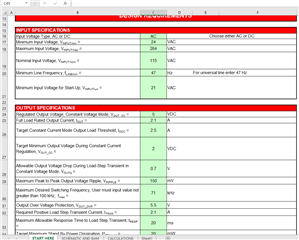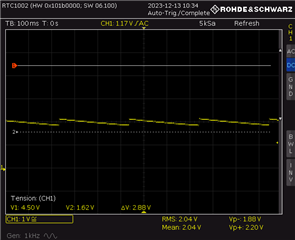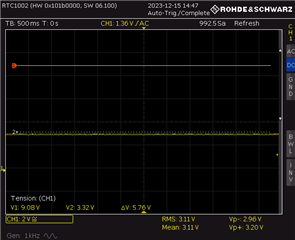Other Parts Discussed in Thread: , TL431
Hello,
I have encountered some issues while testing the UCC28740. We would like to improve the circuit based on the UCC28740EVM-525 to make it work at 24Vdc. During testing, we found that there was no 5V at the output when using 24Vdc. We gradually increased the voltage, and the test card started operating when the input voltage reached 69Vdc. So, I replaced the resistor R2 next to pin VS and changed to 10kohms. I tested VDD and found that the UCC28740 was in Fault protection. Then, I tested voltages elsewhere, and when I tested VDD again, I found its voltage dropped to 0V instead of oscillating between 7.75V and 21V. I'm not sure about the specific cause of this result; I suspect it might be due to excessive current on pin VS, but I couldn't find information about measuring VS current in the datasheet.
Could someone please provide insight into what might be going wrong and how I can modify the circuit to accommodate a 24Vdc voltage?
Thanks in advance .







